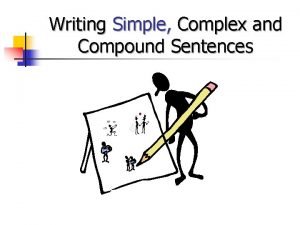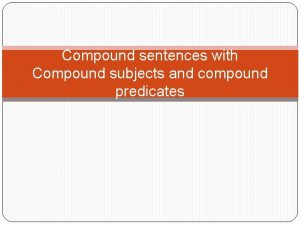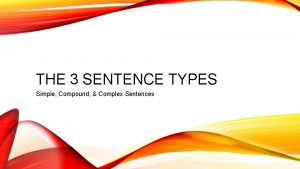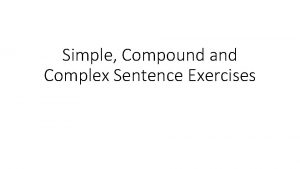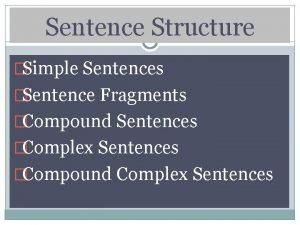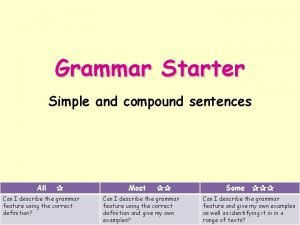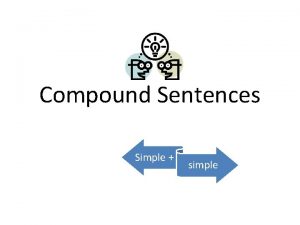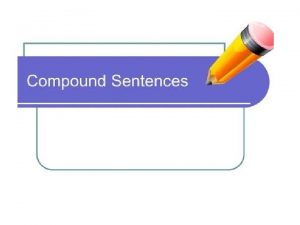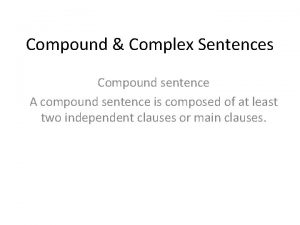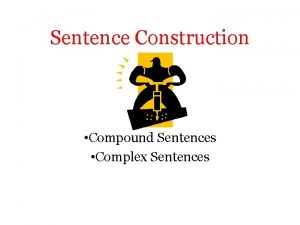Simple and Compound Sentences Simple Sentence A simple








- Slides: 8

Simple and Compound Sentences

Simple Sentence A simple sentence consists of only one independent clause and no dependent clause. A simple sentence has only one simple subject and simple predicate. Ex. Bristol arrived to the birthday party 20 minutes late.

Compound Sentence A compound sentence is formed when you join two independent clauses together. There are two ways to do this.

Compound Sentence First way is to use a semicolon between the two independent clauses. Remember, when using this method, you must be sure that the independent clauses are closely related. This method is not used all the time. Ex. The book touched me very much; I could relate the protagonist.

Compound Sentence The more common way to combine independent clauses is to use a comma and a coordinating conjunction. ● You must have both to hold the sentence together. Neither one is strong enough to do the job by itself. Ex. My sister bought the book, and I read it when she was done.

Coordinating Conjunctions *Coordinating conjunctions connect words, phrases, and clauses. *Coordinating conjunctions that can be used are: for, and, nor, but, or, yet, so *Remember the saying FANBOYS

Coordinating Conjunctions ● and = adds one thing to another ○ Ex. I took the taxi, and my sister drove her car. ● but = shows contrast ○ I wanted to go late, but she likes to be on time. ● Or = presents an alternative or a choice ○ I can cook dinner, or we can go out to eat. ● So = indicates effect, result, or consequence ○ She had to leave early, so she called a friend to get her.

Coordinating Conjunctions cont. ● For = explains reason or purpose (like “because”) ○ I drank some water, for I was thirsty. ● Nor = used to present a negative idea ○ She didn’t drink milk, nor did she eat peanut butter. ● Yet = similar to “but” ○ Tom studied a lot, yet he didn’t pass his test.
 Simple compound complex and compound-complex sentences quiz
Simple compound complex and compound-complex sentences quiz Simple compound complex quiz
Simple compound complex quiz The cat crept through the dark house.
The cat crept through the dark house. What is compound predicate examples
What is compound predicate examples Simple and compound and complex sentences
Simple and compound and complex sentences Complexe sentence examples
Complexe sentence examples Which of the following sentences is a compound sentence
Which of the following sentences is a compound sentence Identify each sentence as simple or compound
Identify each sentence as simple or compound Simple sentences in english
Simple sentences in english


